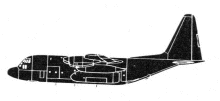Incident Overview
Description
A DHC-6 Twin Otter, registered P2-KSF, was destroyed when it impacted wooded terrain near the top of Mount Lawes, Papua New Guinea, in bad weather. Both pilots and two passengers sustained fatal injuries. The aircraft was operated by Hevilift and conducted a charter flight from Woitape to Port Moresby, Papua New Guinea. It took off at 09:16 local time with the First Officer acting as Pilot Flying and the captain as Pilot Monitoring. At 09:22, when approximately 67 km from Port Moresby at 8,000 ft, Flight Service cleared the aircraft to enter controlled airspace VFR and instructed the flight crew to contact Jacksons Radar at 56 km (30 DME). At 09:25, the Pilot Monitoring called Jacksons Radar and reported that at 54 km (29 DME) from Port Moresby on the 177 radial at 8,000 ft. He stated that they were visual, and requested a clearance to descend. The radar controller cleared the flight to descend to 6,000 ft visual and to track to a left base position for runway 14 right. The Pilot in Command acknowledged this. The radar controller then instructed the crew to contact Jacksons Tower at 19 km (10 DME). At 09:37, the Pilot Monitoring called the tower controller and reported at 17.5 km (9.5 DME) from Jacksons Airport, descending below 4,000 ft AMSL, and stated: “were running into a bit of cloud, we might as well pick up the ILS if its OK”. The tower controller replied immediately, but did not respond to the mention of the ILS; instead, she said “kilo sierra foxtrot roger, continue approach runway 14 right, report on [..] left base”. The Pilot Monitoring responded by reading this back without further mention of the ILS. Shortly afterwards, the aircraft impacted terrain at approximately 1,600 ft AMSL on the northern side of Mount Lawes, just below the summit. Initial review of the cockpit voice recording indicated that there were no aural warnings from the enhanced ground proximity warning system (EGPWS) and that the flight crew did not see the terrain until approximately one second before impact. Causes [Contributing factors]: a) The flight crew continued the descent in instrument meteorological conditions without confirming their position. b) The flight crews assessment of their position was incorrect and they had lost situational awareness c) The flight crew deprived themselves of the “Caution” and “Warning” alerts that would have sounded about 20 sec and about 10 sec respectively before the collision, by not deactivating the EGPWS Terrain Inhibit prior to departure from Woitape.
Source of Information
http://www.radioaustralia.net.au/international/2014-09-20/png-plane-crash-australian-pilot-among-three-dead-in-twin-otter-aircraft-accident/1370467http://www.radioaustralia.net.au/international/2014-09-20/png-plane-crash-australian-pilot-among-three-dead-in-twin-otter-aircraft-accident/1370467Share on:




